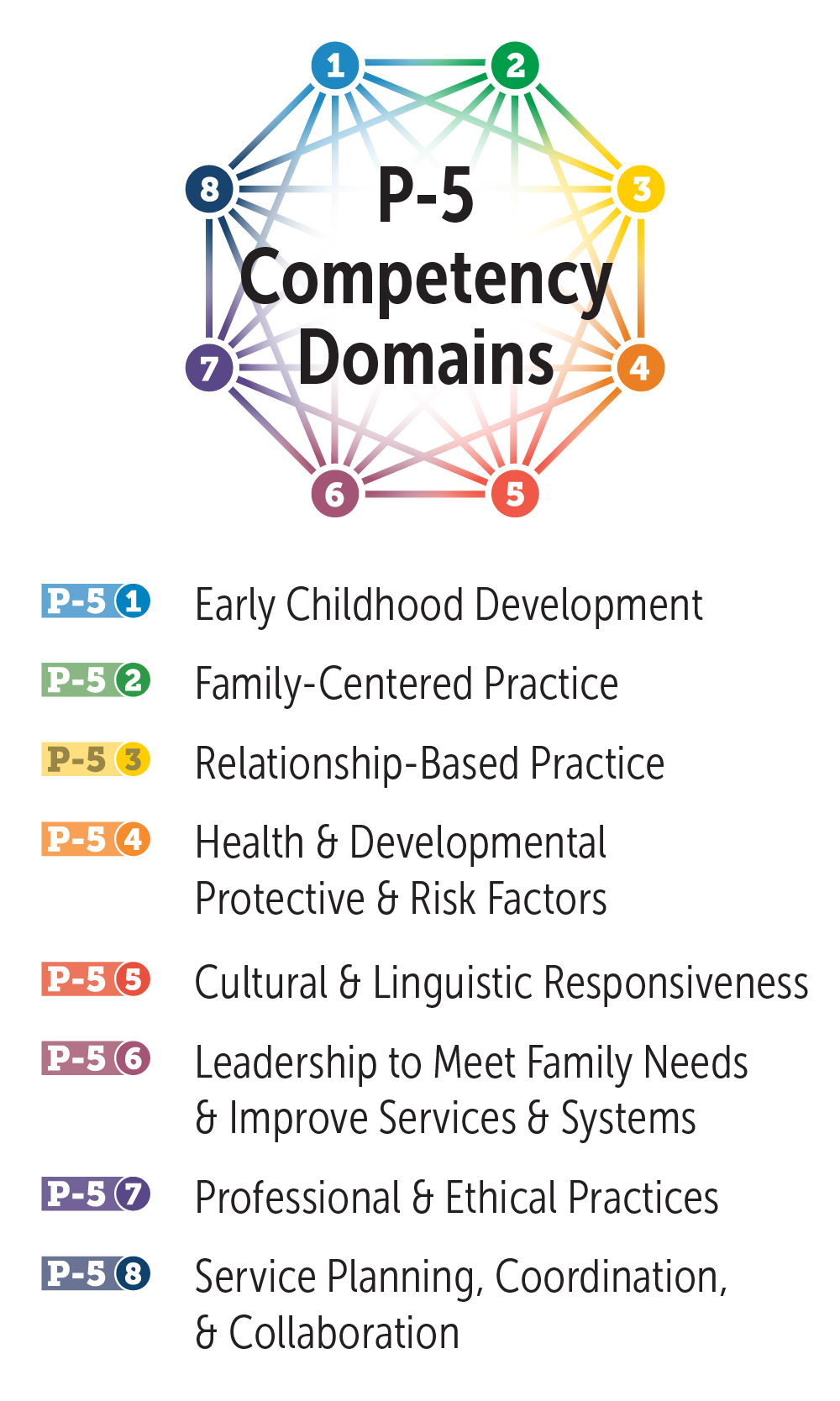

Prevention, Collaboration, and Systems Building
Child maltreatment prevention efforts have moved beyond a public awareness approach to one that emphasizes the vital role of community, early intervention services, and caregiver education to help keep children safe and thriving, with a growing public recognition that child maltreatment is a substantial public health concern. This collection provides prevention resources along the prevention continuum, with an emphasis on collaboration and systems building.
Downloable ResourcesSearch This List
Search This List
-
Website | Learn the Signs. Act Early. (2024)You must log in to access content.
The Centers for Disease Control and Prevention’s (CDC) Learn the Signs. Act Early. website includes free tools and resources for parents, caregivers, health care providers, early educators, and other early childhood professionals to help monitor a child’s early development, promote family engagement, support development, and act on recommendations for early follow-up on developmental concerns.
-
Tip Sheet | Collaborating with Infant-Toddler Court Teams: A Tip Sheet for Home Visiting Professionals (2022)You must log in to access content.
Infant Toddler Court Teams (ITCTs) and home visiting programs have common goals for child and family well-being, including: Nurturing and protecting attachment relationships; ensuring early childhood development is on a healthy track; and strengthening family protective factors. Partnerships can maximize the benefits for families by: streamlining referral processes for home visiting services, including reducing waitlist times; expanding access to resources and supports for families; and supporting mutual goals of ITCTs and home visiting programs
-
Tip Sheet | Collaborating with Home Visiting Programs: A Tip Sheet for Infant-Toddler Court Professionals (2022)You must log in to access content.
Partnerships with home visiting programs are important because, in many cases, they share the same families and goals for those families as the Infant-Toddler Court Team (ITCT). They bring knowledge and experience of community services and resources that meet early childhood development and family needs.
-
Guide | Working Across the Prevention Continuum to Strengthen Families (2021)Read this if you want to establish a common understanding among community partners, legislators, child welfare agency staff, caregivers, youth, and other stakeholders of what an integrated, comprehensive, prevention-focused approach looks like along a three-tiered prevention continuum. Learn more about: a) Definitions of the levels along the prevention continuum; b) Key partners who need to be actively involved in collaboration at each level; c) What it means to be aligned across prevention levels to offer seamless services, and d) Jurisdictional examples of services across primary, secondary, and tertiary levels of the prevention continuum.You must log in to access content.
-
Guide | Prevention Resource Guide 2021-2022The 2021/2022 Prevention Resource Guide recognizes that there are actions we can take as a society and within communities, organizations, and families to address the root causes of child abuse and neglect. The child abuse prevention guide seeks to highlight the innovative ways that communities around the country are doing purposeful prevention work to help children and families thrive. The protective factors have always been central to the Resource Guide. A protective factors approach focuses on positive ways to engage families by emphasizing their strengths, in addition to identifying areas where they have room to grow with support. Focusing on protective factors helps children, youth, and families build resilience and contributes to positive outcomes. Children's Bureau, U.S. Department of Health and Human ServicesYou must log in to access content.
-
Brief | Connecting Families to Services and Supports: What it Takes and What it Means for Creating More Robust Community Prevention (2021)You must log in to access content.
This resource is a snapshot of how one infant-toddler court team (ITCT) and community in Pueblo, Colorado connects families with the services and supports that help them heal, be healthy, and keep their young children safe. It also explores barriers families experience to obtaining support and services before they become the subject of a child protection concern. Similar work going on in Saint Louis County, Minnesota is also highlighted. Center for the Study of Social Policy and ZERO TO THREE
-
Brief | Reframing Childhood Adversity: Promoting Upstream Approaches (Feb 2021)This brief seeks to work through framing challenges, offering guidance on positioning, emphasis, and explanation. It is intended for professionals who communicate about child wellbeing and adversity – a broad field that includes advocates, researchers, and practitioners working on issues including child abuse and neglect, family violence, (ACEs), early trauma and trauma-informed care, and toxic stress. The guidance has implications for a wide variety of communications goals and contexts, but it is most relevant for efforts designed to educate the public about strategies that work at the community and policy levels. Sweetland, J. FrameworksYou must log in to access content.
-
Brief | Protective Factors Approaches in Child Welfare (Mar 2020)his issue brief provides an overview of national protective factors approaches to prevent child abuse and neglect. It is designed to help child welfare professionals, administrators, service providers, policymakers, and other interested individuals understand the concepts of protective and risk factors in families and communities and learn ways in which building protective factors can help lower the risk of child abuse and neglect now and in the future. Childrens Bureau, U.S. Department of Health and Human ServicesYou must log in to access content.
-
Brief | System Transformation to Support Child & Family Well-Being: The Central Role of Economic & Concrete SupportsThis brief summarizes the historical policy context and provides an overview of policy, programmatic, analytic, and engagement strategies for leveraging economic supports to promote child and family well-being and prevent maltreatment.You must log in to access content.
-
Technical Package | Preventing Child Abuse and Neglect: A Technical Package for Policy, Norm, and Programmatic Activities (2016)You must log in to access content.
This technical package represents a select group of strategies based on the best available evidence to help prevent child abuse and neglect. These strategies include strengthening economic supports to families; changing social norms to support parents and positive parenting; providing quality care and education early in life; enhancing parenting skills to promote healthy child development; and intervening to lessen harms and prevent future risk. The strategies represented in this package include those with a focus on preventing child abuse and neglect from happening in the first place as well as approaches to lessen the immediate and long-term harms of child abuse and neglect. These strategies range from a focus on individuals, families, and relationships to broader community and societal change. This range of strategies is needed to better address the interplay between individual-family behavior and broader neighborhood, community, and cultural contexts.
Recordings, Videos & Webinars
Integrating Prevention into the Continuum of Care: A Public Health Innovation by the Honorable S. Floerke, A. Penley, N. Cook, Dr. J. Goldman Fraser (Cross Sites 2020)
Strengthening Families: Building Protective Factors through Infant-Toddler Court Teams by Cailin O'Connor (2020)
Building Partnerships with Home Visiting: What Can a Community Coordinator Do to Start This Work? by Anna Neal (2021)
Key Principles in Systems Building to Advance All Children’s Optimal Development by Dr. Paul Dworkin (Cross Sites 2020)
The Beginning of a Beautiful Partnership: Home Visiting and Infant-Toddler Court Teams
Home Visiting for SBCT Families by E. Fitzgerald Lewis, Z. Levesque, and A. Neal (Cross Sites 2020)
Engaging Parents in Home Visiting - Parent Connections by A. Neal (2021)
Lightning Talk: Rewiring Child Welfare by Megan Vogels (2021)
Lightning Talk: Feeding People, Changing Lives by Mark Dinglasan (2021)
Lightning Talk: Relationships Matter Working Towards Statewide Expansion by Dr. Amy Huffer and Jessica Lertora (2021)
| Access Date | Quiz Result | Score | Actions |
|---|
Learning Center
Technical Support
Need technical support?
Please check our FAQ page for answers to our most common questions

